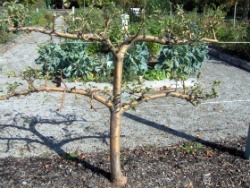Hi all,
I'm seriously contemplating buying one of theseapple trees, they seem fantastic - highly ornamental and tasty fruits.
I was wondering, however, before I purchased one, if people have or had, any experience with this variety, any opinions or advice?
Thanks.
I'm seriously contemplating buying one of theseapple trees, they seem fantastic - highly ornamental and tasty fruits.
I was wondering, however, before I purchased one, if people have or had, any experience with this variety, any opinions or advice?
Thanks.





Comment